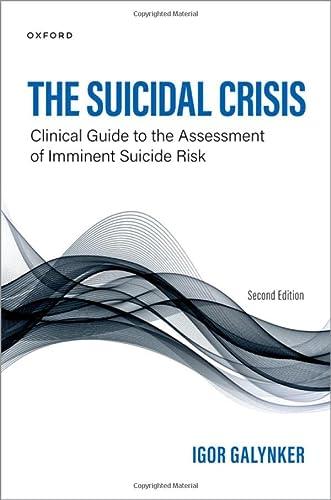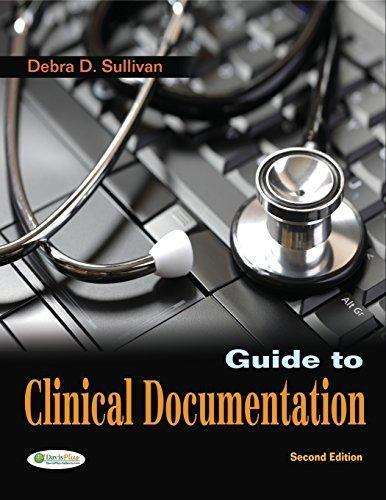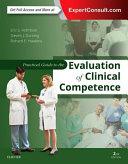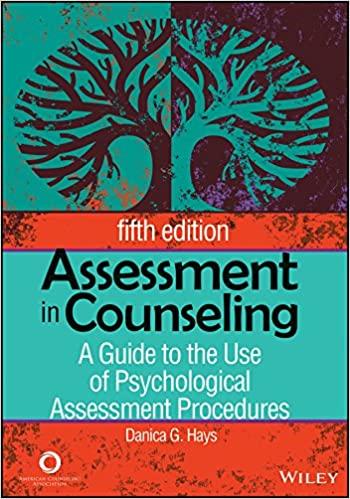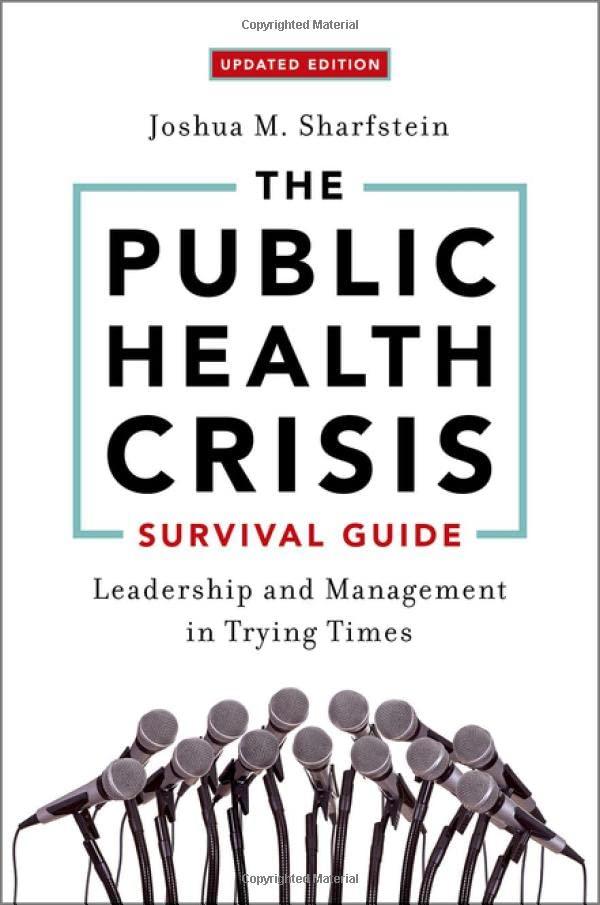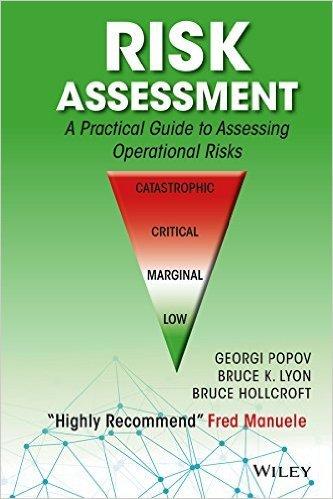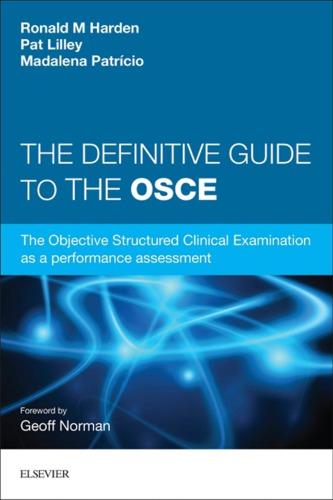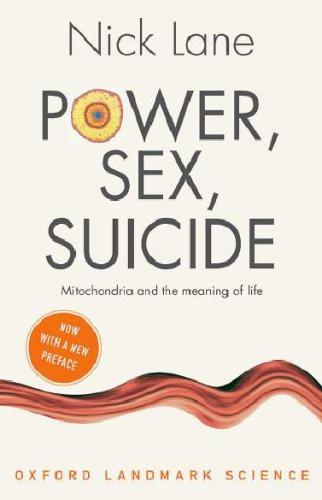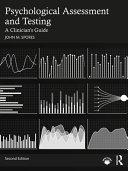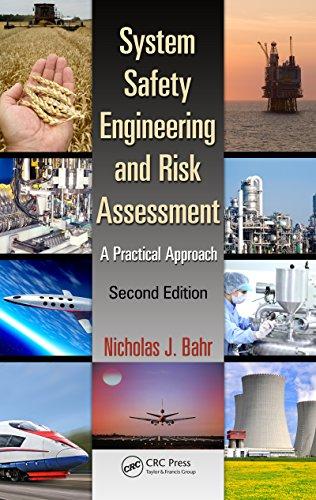The Suicidal Crisis
Clinical Guide to the Assessment of Imminent Suicide Risk
Second Edition
IGOR GALYNKER
Oxford University Press is a department of the University of Oxford. It furthers the University’s objective of excellence in research, scholarship, and education by publishing worldwide. Oxford is a registered trade mark of Oxford University Press in the UK and certain other countries.
Published in the United States of America by Oxford University Press 198 Madison Avenue, New York, NY 10016, United States of America.
© Oxford University Press 2023
All rights reserved. No part of this publication may be reproduced, stored in a retrieval system, or transmitted, in any form or by any means, without the prior permission in writing of Oxford University Press, or as expressly permitted by law, by license, or under terms agreed with the appropriate reproduction rights organization. Inquiries concerning reproduction outside the scope of the above should be sent to the Rights Department, Oxford University Press, at the address above.
You must not circulate this work in any other form and you must impose this same condition on any acquirer.
Library of Congress Cataloging-in-Publication Data
Names: Galynker, Igor I., 1954– author.
Title: The suicidal crisis : clinical guide to the assessment of imminent suicide risk / Igor Galynker.
Description: 2. | New York : Oxford University Press, [2023] | Includes bibliographical references and index.
Identifiers: LCCN 2022044627 (print) | LCCN 2022044628 (ebook) | ISBN 9780197582718 (paperback) | ISBN 9780197582732 (epub) | ISBN 9780197582749 (online)
Subjects: MESH: Suicide—psychology | Suicide—prevention & control | Risk Factors | Risk Assessment—methods | Models, Psychological Classification: LCC RC569 (print) | LCC RC569 (ebook) | NLM WM 165 | DDC 362.28—dc23/eng/20230120
LC record available at https://lccn.loc.gov/2022044627
LC ebook record available at https://lccn.loc.gov/2022044628
DOI: 10.1093/med/9780197582718.001.0001
This material is not intended to be, and should not be considered, a substitute for medical or other professional advice. Treatment for the conditions described in this material is highly dependent on the individual circumstances. And, while this material is designed to offer accurate information with respect to the subject matter covered and to be current as of the time it was written, research and knowledge about medical and health issues is constantly evolving and dose schedules for medications are being revised continually, with new side effects recognized and accounted for regularly. Readers must therefore always check the product information and clinical procedures with the most up-to-date published product information and data sheets provided by the manufacturers and the most recent codes of conduct and safety regulation. The publisher and the authors make no representations or warranties to readers, express or implied, as to the accuracy or completeness of this material. Without limiting the foregoing, the publisher and the authors make no representations or warranties as to the accuracy or efficacy of the drug dosages mentioned in the material. The authors and the publisher do not accept, and expressly disclaim, any responsibility for any liability, loss, or risk that may be claimed or incurred as a consequence of the use and/or application of any of the contents of this material.
Printed by Marquis Book Printing, Canada
To the American Foundation for Suicide Prevention
8.
Acknowledgments
I am thankful to Oxford University Press for believing that The Suicidal Crisis is an important book worthy of a second edition. I am equally thankful to my editors, Andrea Knobloch and Katie Lakina, for their expertise and support throughout the writing process.
I thank the American Foundation for Suicide Prevention for its support of research in acute suicidal states and in predicting short-term suicide risk. In particular, I thank Dr. Jill Harkavy-Friedman for her dedication to the cause of suicide prevention; for her generosity with her time and her ideas; for her brilliant knowledge of suicidology; for her unparalleled scientific rigor; for her belief in the importance of developing clinical approaches to suicide prevention; and for her grace, wit, and good humor. I am deeply grateful to Rob and Kathy Masinter for their visionary and inspirational trust in our work and gratefully acknowledge the Eric Masinter Memorial Fund for its generous support of the Mount Sinai Beth Israel Suicide Prevention Research Laboratory.
This book would not have been possible without the work of my long-time collaborator, Dr. Lisa Cohen. During our many years of trying to solve the puzzle of the psychological processes that make suicide possible, I benefited greatly from Lisa’s intellectual voracity, unparalleled commitment to both clinical work and science, and unwavering moral compass. She has been invaluable in providing scientific evidence for the Narrative Crisis Model of Suicide, which is the backbone of this book.
I also thank my other collaborators from the Mount Sinai Suicide Prevention Research Laboratory. Their contribution to The Suicidal Crisis lies in many stimulating and lively discussions we have had during our research meetings and clinical work rounds. For this I am particularly grateful to Drs. Megan Rogers, Shira Barzilay, Sarah Bloch-Elkouby, and Benedetta Imbastaro. I am indebted to Inna Goncearenco and Olivia Lawrence for their editing work on the book as a whole and for their co-authorship of several book chapters, and to Inna Goncearenco alone for her development of the second edition’s wonderful cover design. I am most grateful to my other chapter co-authors—Lakshmi Chennapragada and Kimia Ziafat.
I consider working in the field of suicide prevention a great privilege, and the decision to change my research focus to suicidology was the best career decision I have ever made. Writing the second edition of this book gave me an opportunity to add experimental evidence to 30 years of clinical experience as an inpatient and outpatient psychiatrist. With increasing specialization in both research and clinical work, this essential blend of research and clinical expertise is becoming increasingly rare, and yet it is critically important for keeping psychiatric research clinically relevant. In this book, the names and identifiers of individual patients and their family members have been changed to protect their privacy. I remember all of them, and I am deeply grateful for their trust in my skill and judgment.
Finally, I thank my wife Asya for her love, kindness, and patience. The second edition of The Suicidal Crisis was written after hours (as was the first edition) and the Guide would not be possible without her support.
Introduction and Overview
The Ticking Time Bomb of the American Suicide Health Crisis
In June of 2019, the summer before the COVID-19 pandemic, three Navy sailors assigned to the USS George H.W. Bush aircraft carrier died by suicide in three separate incidents. These deaths marked the third, fourth, and fifth crew members of the carrier to take their own lives in two years. The military suicide problem is echoed by a similar problem in the medical field. Every day, one U.S. doctor ends his or her own life—one of the highest suicide rates in any profession (Peterson et al., 2020). In another demographic subgroup, American Indians have the highest rate of suicide of any racial or ethnic group in the United States (Curtin et al., 2021). The suicide epidemic has reached all of us.
The U.S. suicide statistics are sobering, and the scope of the suicide epidemic represents a major public health crisis. In 2020, 45,979 people in the United States died by suicide (Centers for Disease Control and Prevention [CDC], 2020) and it is estimated that 1,200,000 attempted suicide. To put this in perspective, among individuals under the age of 45, suicide accounts for more annual deaths than homicide, AIDS, car accidents, and war (Heron, 2021). More teenagers and young adults will die from suicide than from cancer, heart disease, AIDS, birth defects, stroke, pneumonia, influenza, and chronic lung disease combined. While the first year of the COVID-19 pandemic coincided with a drop in overall suicide rates in the United States, there was an increase in suicide rates in children and adolescents and young adults 10 to 34 years old. Remarkably, in 2020, deaths among Black girls and women between ages 10 and 24 increased more than 30%, from 1.6 to 2.1 per 100,000 people. Black boys and men of the same age had a 23% increase, from 3 to 3.7 per 100,000 (Curtin et al., 2021). According to the CDC, in the summer of 2020, 11% of surveyed adults over 18 years old reported having seriously considered suicide since the beginning of the pandemic. This translates into an astounding 22,000,000 Americans who should be evaluated for suicide risk (Czeisler et al., 2020).
While the suicide rates in the United States have been steadily increasing over the past two decades, in other industrialized countries, such as Great Britain, pre-COVID suicide rates have been steadier, while the rates have decreased worldwide, from their peak at 1,000,000 in 1995 to the estimated 703,000 in 2019 (World Health Organization, 2021). In the United States, however, in 2017 alone, suicide rates increased by 10% in adolescents and young adults age 15 to 24 and rose by a staggering 50% in children age 10 to 14. Despite a 3% decrease in U.S. suicide rates in 2019, suicide is currently the tenth leading cause of death overall and the second leading cause of death in adolescents and young adults 10 to 34 years old (Heron, 2021).
Although somewhat obscured by the COVID-19 pandemic, the U.S. suicide epidemic continues unabated, and it is time to confront it with the same determination that we confronted the epidemic of HIV/AIDS. We can start the battle by understanding that the mental state leading to suicide is an independent medical condition, one that can be diagnosed and treated with medications and psychotherapy.
As doctors and therapists have learned from decades of experience, a suicidal person cannot be expected to volunteer the truth about suicide plans. This is partly because the suicidal crisis may be very short-lived, and partly because the mind of a suicidal person is critically afflicted and therefore cannot be relied upon to adequately assess its own dangerous state. Recent research shows that the pre-suicidal state of mind is an illness in itself, a mental state characterized by five recognizable criteria, including entrapment, affective dysregulation, loss of cognitive control, hyperarousal, and acute social withdrawal (Bloch-Elkouby et al., 2020; Calati et al., 2020; Rogers et al., 2019; Schuck et al., 2019). This condition is called the Suicide Crisis Syndrome (SCS), and SCS can and should be treated.
Because our understanding of the pre-suicidal mental state is relatively new and has yet to be incorporated into the Diagnostic and Statistical Manual of Mental Disorders (DSM), contemporary clinical practice largely sees suicide as a manifestation of other mental disorders, such as depression or schizophrenia. Clinicians try to prevent suicide by treating the underlying condition, while relying on individuals to develop insight into, and to report, their mental processes that may lead to suicide. Specifically, mental health professionals rely on patients to honestly and accurately disclose their suicidal ideation (SI) by answering questions like “Have you ever thought of harming yourself?” or “Are you planning to harm yourself?”
The success rate of this method is low, performing slightly above chance. That is not surprising, given that about 75% of people who die by suicide never reveal their suicidal thoughts to anyone, according to the CDC (Stone et al., 2018). Indeed, some of them may not have a conscious suicidal plan until the very last moment of their life, or even not at all.
Such was the case of Kathy (name changed), the mother of a 12-year-old boy, who was in the throes of a hostile divorce and who, at the last second, did not move away from an oncoming van. Somehow, Kathy survived. When her many fractures healed, she said, pensively, “I never thought I was suicidal, but I guess I was, because otherwise I would have moved away.” Kathy would not have reported being suicidal, but she met all the SCS criteria.
In the inpatient and outpatient facilities at Mount Sinai Beth Israel, in New York, the attending staff and psychiatry residents were trained to recognize SCS and to use it as the centerpiece of suicide risk assessment. Through training and practice, they were able to confidently identify high-risk individuals and help them recover, without relying on the patients’ self-diagnosis via admission of their suicidal intent. Furthermore, after SCS assessment was implemented in the NorthShore University Health System in Chicago, the emergency department clinicians started using SCS diagnosis as a tool to inform their admission and discharge decision-making related to SI. Over the first two years, there were no completed suicides, and the readmission rate for suicide risk went down by 40% (Figure 1.1).
While doctors would never dream of basing a diagnosis solely on a patient’s declaring “I am schizophrenic” or “I am bipolar,” the pre-suicidal mind is more distorted and acutely life-threatening than either schizophrenia or bipolar disorder. Still, for decades, risk assessment has been based
Figure 1.1 Clinical utility of abbreviated SCS assessment versus suicidal ideation (admission).
on the suicidal patient’s accurate answer to the question, “Are you planning to kill yourself?”
Today, most professionals remain wedded to this conventional wisdom. The problem with this practice, and with the administrative and clinical tools using similar approaches for predicting suicides, is that they fail to identify the majority of those who go on to take their lives. If we want to save lives, we must get smarter and more efficient at addressing this issue and stop making critical life-saving treatment decisions based on the clouded judgment of a person suffering from the unbearable pain that precedes suicide.
The pre-suicidal mental state of SCS is a life-threatening illness that can be diagnosed by mental health professionals, after they have been appropriately trained. Anybody who is concerned that his or her loved one may be suicidal could, with proper education, recognize the signs of SCS. For this approach to enter the mainstream of psychiatry, SCS symptomatology should be taught in medical schools and other training programs for clinicians, alongside the symptoms of schizophrenia and other psychiatric disorders. Education about SCS should be available to all concerned, both in person and online.
By training doctors and the public at large to understand SCS, we can save thousands of lives. Like a heart attack, SCS can be treated; it does not have to be fatal.
What Is Imminent Suicide?
One of the most difficult determinations a psychiatrist makes is whether the chronically suicidal patient is at risk for imminent suicide. Although some clinicians rarely work with suicidal patients, others assess them daily, and all clinicians will face this challenge at least once. Hence, one of the goals of the National Alliance for Suicide Prevention’s Research Prioritization Task Force is to find ways to assess who is at risk for attempting suicide in the immediate future.
Currently, there is no guide that can help clinicians accurately evaluate the risk of imminent suicide. The dictionary definition of the word imminent is “about to happen.” It is also a legal term that, when applied to suicide risk, implies that suicide will happen so soon that immediate clinical intervention is required to prevent it. The phrase “risk for suicide in the immediate future” was chosen by the task force instead of “imminent risk” because the latter
may imply (incorrectly) that mental health professionals have the ability to predict precisely when an impending suicidal act is going to take place (Claassen et al., 2014). The more accurate terms near-term and short-term suicide risk refer to a defined time period, such as one month, that could be used in suicide research studies. However, these terms may obscure the urgency of the life-and-death decisions made daily by frontline clinicians.
To underscore the pressure experienced by psychiatrists in their daily risk assessments, this guide retains the term imminent suicide risk, and this term is used interchangeably with the more research-oriented terms and with the intuitive clinical term acute risk. In this guide, the term imminent suicide designates the time interval from the moment the patient parts from the psychiatrist until the next appointment. Defined in this manner, imminent suicide implies that unless action is taken, the patient will attempt suicide prior to his or her next clinical visit. The length of the “imminent” time period can vary from hours for the same-day postdischarge outpatient appointment to months, as is the case for a regular outpatient visit for medication management.
Most often, however, “imminent” or “immediate future” means several days, reflecting the regular interval between care appointments after hospital discharge or while in weekly or biweekly therapy. Regardless of the duration of the interval, however, in the eyes of the patient’s loved ones, the medical profession, and the law, during this time, it is the clinician who last saw the patient alive who bears the responsibility for the suicide, should it occur.
Long-Term versus Imminent Suicide Risk: Who versus When
Unfortunately, at present, despite substantial research efforts, our ability to identify those at risk for suicide in emergency departments, outpatient offices, and inpatient units has not changed in the last 50 years and remains close to chance (Franklin et al., 2017; Large et al., 2011). However, although the current clinical reality may be disheartening, recent advances in the field of suicidology have resulted in new, promising approaches to assessing shortterm suicide risk. One such development is the recent attention toward the distinction between long- and short-term risk for suicide. This distinction lies in the difference between identifying who is at risk of dying by suicide at some point and when such individuals would actually take their lives.
The long-term risk factors for suicide (the “who”) are well known. The most widely assessed factors are the history of mental illness (Backmann, 2018; Brådvik, 2018) and past suicide attempt (Probert-Lindström et al., 2020; Suokas et al., 2001), which increase the odds for eventual suicide 30fold each. These two factors, however, have two major shortcomings in the context of assessing imminent suicide risk. The first shortcoming is that nearly every person evaluated by psychiatrists for suicide risk has either a mental illness or a history of suicide attempt, or both, which makes these aspects of little relevance in the clinical setting. In other words, for those diagnosed with a mental health condition, we know who is at risk. What we do not know is whether the “when” factor for imminent risk for suicide is within days, hours, or minutes. Recent machine learning (ML) analyses of electronic health records have started to narrow the “when” window and to succeed in identifying those who were seven times more likely to die by suicide in the next three months (Simon et al., 2018). However, the main risk factors identified with ML methods are the same: diagnoses of mental illness and history of suicide attempts. Hence, the second shortcoming of the mental illness/past attempt risk factors is that over 50% of those who have died by suicide never received a mental health diagnosis (Stone et al., 2018) and over 50% of those dying by suicide have succeeded in their first attempt (Bostwick et al., 2016).
The difference between the long-term and short-term risk factors for suicide was first described by Fawcett, Scheftner, and Clark (1987), who, in a prospective study, discovered that risk factors for suicide attempts differed, depending on the time elapsed since the initial assessment. In that pioneering study, “short-term” was relatively long and was defined as one year, while “long-term” was the period between two and ten years. The authors discovered that the short-term and the long-term risk factors were different (Table 1.1).
Surprisingly, in the Fawcett study, the well-known risk factors for suicide—depression, hopelessness, helplessness, and SI—were associated only with eventual risk for suicide. The short-term risk factors were the anxiety-related factors: anxiety, panic attacks, insomnia, agitation, and anhedonia. The latter finding has since been supported by multiple epidemiological and clinical studies (Black et al., 2019; Galynker et al., 2017; Goldblatt et al., 2016; Katz et al., 2011; Lim et al., 2015; Nam et al., 2016; Pilowsky et al., 1999; Rappaport et al., 2014; Scheer et al., 2020; Weissman et al., 1989; Yaseen et al., 2013). Moreover, the predictive value of panic, insomnia, and agitation
Table 1.1 Long-Term Versus Short-Term Risk Factors for Suicide
Short Term (< 1 Year)
Anhedonia
Panic attacks
Psychic anxiety
Insomnia
Moderate alcohol abuse
Long Term (1–5 Years)
Hopelessness
Helplessness
Suicidal ideation
Past suicide attempts
as symptoms of an acute pre-suicidal mental state was supported in several prospective studies in the United States and abroad (Galynker et al., 2017; Otte et al., 2020).
Another important development in imminent risk assessment is the growing appreciation that a unique and acute negative affective state of short duration may precede suicide attempts (Bagge et al., 2014, Bagge & Borges, 2017; Diesenhammer et al., 2009). Initially, this state was called the suicide trigger state (Yaseen et al., 2010), but later it was called the suicide crisis syndrome (SCS) in homage to Dr. Herbert Hendin, a pioneering suicidologist, who was one of the first to hypothesize the existence of an acute pre-suicidal mental state, which he called the suicidal crisis. Thomas Joiner and colleagues later proposed a related syndrome called the acute suicidal affective disturbance (ASAD), which is characterized by a rapid onset of interrelated symptoms associated with acute suicide risk (Tucker et al., 2016).
Conceptually, the difference between long-term risk factors for suicide and the short-term factors comprising SCS is similar to the difference between long-term risk factors for cardiovascular disease and unstable angina. The ongoing Framingham study has shown that cardiovascular long-term risk factors include hypertension, obesity, diabetes, lack of exercise, and high cholesterol (Hajar, 2016). These factors identify who may have a myocardial infarction during the next decades (the “who”). An imminent heart attack is predicted by unstable angina, which is the syndrome reflecting lack of myocardial perfusion or ischemia and manifesting with chest pain, shortness of breath, and diaphoresis. These symptoms identify the time that the heart attack may occur (the “when”). In suicidology, the long-term risk factors identifying “who” include the history of mental illness, past suicide attempts, and others (see Chapter 4), while SCS is the unstable angina equivalent identifying “when.” Unstable angina, if untreated, may lead to near-term
myocardial infarction, while SCS, if untreated, may lead to near-term suicide. One of the main aims of both suicide research and the suicide prevention effort is the appreciation of the difference between long-term risk factors and SCS, and the need to identify and treat the latter. Although the suicide crisis–myocardial infarction analogy is not literal, it is a useful parallel to keep in mind when assessing imminent suicide risk. Assessing the long-term risk factors will identify “who,” but SCS intensity will predict “when.”
Lack of Tests for Suicide Prediction
The suicide assessment instruments currently in use do not distinguish between long-term risk factors for eventual suicide and short-term risk factors for imminent suicide. Moreover, most of these scales rely on consensus opinion, or on psychological autopsies and past suicide attempts, which may not be predictive of future suicidal behavior. Indeed, when tested for prediction of completed suicide and suicide attempt, these instruments were not predictive of short-term events.
A well-known example of a consensus-derived, widely used scale that was never validated is the SAD PERSONS scale (see Chapter 9). In a large-scale retrospective study, the SAD PERSONS scale was not predictive of suicide attempts and suicides in the immediate future (six months; Bolton et al., 2012). Another large study showed that 60% of persons who completed suicide within one year after psychiatric discharge were judged “low suicide risk” by this scale (Large et al., 2011). Finally, a recent series of British studies prospectively investigated the predictive validity of the SAD PERSONS scale, the Modified SAD PERSONS Scale, ReACT Self-Harm Rule, Manchester Self-Harm Rule, and Barratt Impulsivity Scale (McClatchey et al., 2019; Quinlivan et al., 2019; Steeg et al., 2018; Runeson et al., 2017; Taylor et al., 2021). None of the scales showed prospective predictive validity for nearterm (six months) suicidal behavior, and none has achieved widespread use (Quinlivan et al., 2017).
In contrast to the above-mentioned instruments, the Columbia Suicide Severity Rating Scale (C-SSRS; Posner, 2011), an evidence-based questionnaire developed in the last decade, has had widespread use. Although initially developed as the first tool for the comprehensive descriptive assessment of both SI and suicidal behavior, C-SSRS has been increasingly used for prediction of suicidal behavior and risk assessment stratification. The results of
Table 1.2 Prospective Studies Examining Suicidal Outcomes
Predictor Studies
Beck Depression Inventory (BDI)
Beck Hopelessness Scale (BHS)
Barratt Impulsivity Scale
Suicide Intent Scale (SIS)
Physical Anhedonia Scale (PAS)
Implicit Association Task (IAT)
Manchester SelfHarm Rule
ReACT SelfHarm Rule
SKA-2
Oquendo et al. (2004) X X 2 years
Beck et al. (1985, 1989)
Steeg et al. (2018)
Harriss & Hawton (2005)
(2007)
Nock et al. (2010)
Quinlivan et al. (2017); Steeg et al. (2018)
Steeg et al. (2018); Runeson et al. (2017)
Guintivano et al. (2014)
Suicide Trigger Scale (STS) Yaseen et al. (2014)
Suicide Stroop
Columbia Suicide Severity Rating Scale (C-SSRS)
Cha et al. (2010)
Pmosner et al. (2011); Horwitz et al., (2015)
years 4 months; 9 months
short-term prospective suicidal outcome studies, along with other prospective prediction studies’ outcomes, are listed in Table 1.2. The C-SSRS showed modest predictive validity for those who disclose SI. However, because over 75% of those who die by suicide do not reveal their suicidal thoughts to anyone (Stone et al., 2018), the C-SSRS may fail to detect a large portion of the population who go on to attempt suicide.
The Problem of “Non-Disclosure”
As previously discussed, imminent suicide risk assessment remains difficult, with no reliable predictive methods available. This conceptual and diagnostic
void requires a clinician to organize disparate bits of information into a subjective and actionable clinical opinion. In the absence of diagnostic tests in formulating this opinion, clinicians overwhelmingly rely on the patient’s truthful answers to explicit questions about their suicidal history and intent. However, this overreliance on the patient’s self-report (SI) in assessing imminent suicide risk may be misguided.
Early research showed that only one-third of patients seen in the emergency department for a serious suicide attempt had persistent SI, whereas the rest had either fleeting thoughts about suicide or none at all (Paykel et al., 1974). Thus, patients may not have SI or a plan until immediately before their attempt. On the other hand, those who are determined to end their lives often hide their intent (Horesh & Apter, 2006; Horesh et al., 2004) and may specifically hide it from their clinicians, while disclosing their SI to others, such as research assistants (B Bloch-Elkouby et al., 2022; Rogers et al., 2022). The most frequent reason for deliberately hiding SI is fear of involuntary hospitalization (Blanchard & Farber, 2020). Therefore, posing the question, “Have you been thinking about killing yourself?” to somebody who will attempt suicide imminently is often likely to provoke a negative response.
Nevertheless, contemporary practices and established guidelines for suicide risk assessment emphasize assessing the presence and severity of SI as a crucial first step in determining who may be at risk for suicidal behavior (Chu et al., 2015; National Suicide Prevention Lifeline, 2007; Posner et al., 2011). However, because of the fleeting nature of suicidal intent, along with patients’ deliberate concealment of SI from their clinicians, there are several notable limitations associated with relying on SI for the prediction of future suicidal behavior. For one, SI alone is a poor predictor of suicidal behavior (Borges et al., 2008; Ribeiro et al., 2016). The past-year and lifetime prevalence of SI is consistently several times higher than that of suicide attempts (Borges et al., 2012; Kessler et al., 1999; Nock et al., 2008), indicating that few who have SI go on to make a suicide attempt. Additionally, many individuals opt not to disclose SI when it is present. In several studies, only a minority (approximately 25%) of suicide decedents reported SI in the final communications with healthcare providers prior to their deaths (Berman, 2018; Busch et al., 2003; Smith et al., 2013; Stone et al., 2018), and many decedents were viewed to be at low or no immediate risk for suicide (Appleby et al., 1999). Finally, additional evidence suggests that SI fluctuates substantially over short periods of time (Harris et al., 2010; Kleiman et al., 2017) and that
retrospective ratings may be discordant from real-time ratings of SI (Gratch et al., 2020).
Altogether, these findings indicate that many instances of SI may go undetected and that, even if identified, these thoughts do not indicate who is at risk for suicidal behavior. Moreover, since SI may not appear until minutes before suicide, making self-reported SI the centerpiece and the gateway item for suicide risk assessment is an unsound practice both scientifically and conceptually. Scientifically, there is no experimental evidence to support the claim that SI is the single most important predictor of imminent suicide (Franklin et al., 2017), with abundant evidence to the contrary. Conceptually, just as we would never rely on those with schizophrenia or bipolar disorder to self-diagnose their illness, neither should we rely on those with an acutely life-threatening pre-suicidal mental state to self-diagnose their suicidal risk. Thus, the role of self-reported SI in risk assessment must be reconsidered.
Suicide Crisis Syndrome
SCS is conceptualized as an acute transdiagnostic pre-suicidal mental state that develops within days, hours, and minutes before suicide (Yaseen et al., 2010). Given the prevalence of patients’ concealment of SI and the lack of scientific evidence supporting the validity of self-reported SI, the presence of SI is not required for the diagnosis of SCS, although it may have been present (Schuck et al., 2019). Given the urgent need to predict suicide, and the fact that there has never been a suicide-specific diagnosis in the DSM (American Psychiatric Association, 2013), the eventual goal for SCS, should it prove to be a valid and clinically useful syndrome, is its inclusion in the DSM to aid and improve suicide prevention. Since the DSM is a widely used tool for diagnosis of mental disorders, and up to 22% of suicide decedents have contact with a mental health professional within one week of their attempt (SteneLarsen & Reneflot, 2019), a suicide-specific SCS diagnosis could be crucial in identifying those at risk for imminent suicide.
Two main arguments can be made for the use of SCS as a suicide-specific diagnosis. First, suicide has been included only as a symptom of other disorders in the DSM. For example, one possible criterion of major depressive disorder is thoughts of suicide (American Psychiatric Association, 2013), and SI also appears in other diagnoses, such as bipolar disorder and borderline personality disorder. Recommended treatment for those presenting
with suicidal thoughts includes treating the underlying disorder, so suicide may be treated as a symptom of a broader disorder. Second, some individuals do not meet the criteria for any existing mental disorders and still go on to attempt suicide. In fact, a recent CDC report found that more than half of individuals who died by suicide did not have a psychiatric diagnosis at the time of their death (Stone et al., 2018).
SCS initially had two components (Yaseen et al., 2010). The first factor was the loss of cognitive control over one’s thoughts and was termed “ruminative flooding.” The second factor was the affective state of “frantic hopelessness,” which is also referred to as entrapment (Galynker et al., 2014). These initial findings were replicated and extended in many research studies in diverse clinical and cultural settings (Galynker et al., 2017; Otte et al., 2020). In its current form, which is under consideration for inclusion in the DSM as a suicide-specific diagnosis, SCS has five components, separated into two criteria. Both criteria must be met to receive a diagnosis of SCS. Criterion A is entrapment/frantic hopelessness, or the urgent feeling of needing to escape a perceived inescapable life situation. Frantic hopelessness/entrapment has been found to be the strongest predictor of near-term suicidal behavior, as well as a mediator of the relationship between some of the other SCS components and near-term suicidal behavior (Li et al., 2017, 2018). Criterion B has four components, each enhancing the predictive validity of Criterion A: affective disturbance, loss of cognitive control, hyperarousal, and acute social withdrawal. Each of the four must be present for Criterion B to be met. Individuals meeting both Criterion A and Criterion B, as compared with those meeting partial criteria, are at higher risk for a near-term suicide attempt (Yaseen et al., 2019). It is important to note that although the diagnosis of SCS may identify those at risk for suicide, it is not intended to be a “diagnosis of risk.” Rather, SCS describes the acute mental state that is associated with near-term suicidal behavior (for in-depth review and case examples, see Chapter 6).
Recent research assessing the predictive validity of SCS for imminent (within one month) suicidal behavior showed the syndrome to be prevalent in the general population as a specific response to some of the stressors of the COVID-19 pandemic (Park et al., 2021; Richards et al., 2021) SCS has also shown to be a more specific predictor for near-term suicide attempts than SI(. Moreover, a machine-learning analysis of the data from a large prospective study showed that adding SI to the SCS did not materially add to the SCC predictive validity (McMullen et al., 2021). Nevertheless, patients with both
SCS and SI are likely to be at higher risk for imminent suicidal behavior than patients with either SCS or SI alone. This finding supports the long-term goal of appropriate evidence-based integration of SI into the SCS. The recently proposed ASAD (Tucker et al., 2016) is a syndrome conceptually similar to the SCS, but it includes the crescendo of SI as its central component. One possible solution to the inclusion of SI in the SCS is to use both SI and ASAD as SCS modifiers, so that SCS can be diagnosed with and without SI/ASAD. The work on testing this framework is ongoing.
The Narrative-Crisis Model of Suicide
SCS is the centerpiece of the narrative-crisis model of suicide (NCM), developed by our research group (Bloch-Elkouby et al., 2020; Cohen et al., 2022). Multiple models of suicidal behaviors have been proposed in the past (and are reviewed in detail in Chapter 2). Why, then, is there a need to propose another model? Just as the conceptualization of the SCS and the research that defined its phenomenology was initiated because of the urgent need to fill a large gap in knowledge about the acute pre-suicidal mental state (or states), the formulation of, and research into, NCM was brought on by the urgent need to describe the mental processes leading to the emergence of the SCS in a way that would serve as a framework for comprehensive suicide prevention. Another reason for proposing and experimentally testing NCM is that empirical support for previously published models has been modest at best. Ultimately, NCM has the potential to be an evidence-based guide to suicide prevention for frontline clinicians.
SCS is an acute syndrome that is shorter in its duration than acute (state) anxiety (Galynker et al., 2017). It may last hours or days, and it lasts longer than the suicidal urge, which may appear within minutes before suicide, when it is too late to intervene. SCS is therefore treatable if detected in time. However, the subacute mental states that lead to SCS emergence in response to life stresses that may befall anyone—romantic rejections, financial setbacks, or world catastrophes, such as the COVID-19 pandemic—remain to be determined. What makes some of us vulnerable to experiencing these states, while others seem to be resilient and impervious to them? Finally, how can we integrate disparate risk and protective factors, reported to date, into one coherent framework for suicide prevention?
